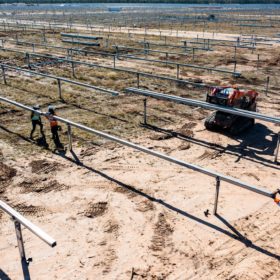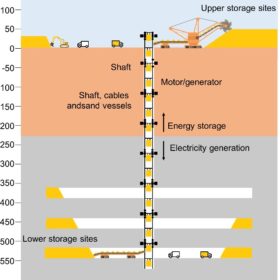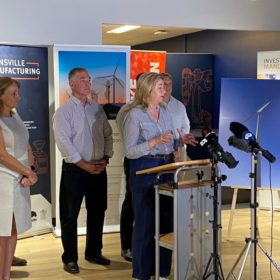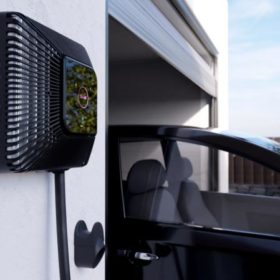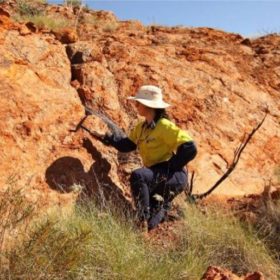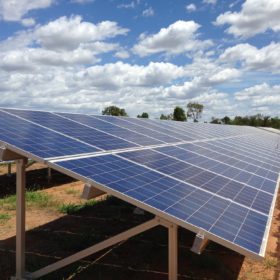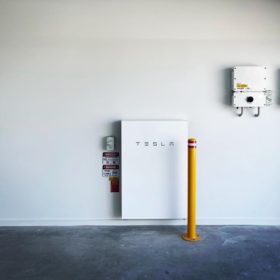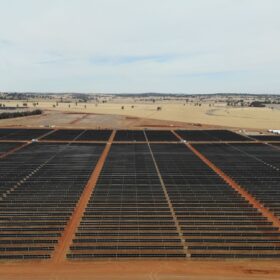4.3 GW of generation and storage makes shortlist in NSW renewables auction
Sixteen projects representing more than 4.3 GW of large-scale generation and long-duration storage have been shortlisted as part of the first of a rolling schedule of competitive tenders designed to ensure New South Wales’ successful transition from coal-fired power generation to a renewables-based energy system.
Storing renewables via regenerative braking in underground mines
Scientists in Austria have developed a long-term energy storage system that uses regenerative braking to adjust the descent speed of sand in mine shafts and generate electricity.
Queensland to build $75m vanadium, rare earth processing facility for burgeoning battery industries
The Queensland government will invest $75 million (USD 53 million) to expand a critical minerals demonstration facility in Townsville – a project it claims will be an Australian first. The facility, slated for operations in 2025, is part of a growing push in Australia to develop battery materials industries beyond simply mining.
New residential battery inverter solution from China
Esysunhome (ESYSH), a new energy storage company in China, has developed a 5.12 kWh lithium iron phosphate (LFP) battery system with a 7.9 kW inverter. It says six modules can be combined for up to 30.72 kWh of energy storage capacity.
South Australia gives vehicle-to-grid technology green light
South Australia has become the first jurisdiction in Australia to approve network connection of vehicle-to-grid technology in a residential setting, providing electric vehicle owners with the opportunity to send energy stored in their car’s on-board battery back into their own homes or the electricity grid.
Australian lithium miners lead way in battery minerals supply chain
With global demand for new energy storage soaring and nations and companies racing to secure battery metals supply chains, a series of major investments in Australia and Australian lithium mining companies is expected to accelerate the nation’s transformation into a critical minerals powerhouse.
Brisbane battery casing startup with ‘tremendous potential’ lands support from ReNu
Queensland-based ReNu Energy will acquire up to a 20% stake in fellow Brisbane company, startup Vaulta, which has developed battery casings designed for reuse and recycling. Vaulta will use the eventual $1 million (USD 700,000) investment from ReNu to scale its manufacturing capability and expand domestic and offshore sales.
Lithium-ion battery cell gigafactory coming to Geelong as US-Australia ties deepen
Geelong is set to become home to a $300 million (USD 210 million) lithium-ion battery gigafactory. Recharge Industries, part of a portfolio from US fund Scale Facilitation, is aiming to start construction by the end of the year, targeting 2 GWh of production annually in 2024 and 6 GWh by 2026. The company is reportedly aiming to produce batteries without using Chinese materials, and appears to be part of a deepening supply chain play between Australia and the US.
Queensland targets microgrid tech for regional resilience
The benefits of microgrid technologies will be explored by the Queensland government as it seeks to improve the resilience and reliability of electricity supply for remote and regional communities with an initial $10 million (USD 6.8 million) allocated to support the development of a pipeline of microgrid projects across the state.
ACT pulls plug on Next Gen energy storage program
A government-backed incentive scheme established to accelerate the introduction of distributed solar energy storage in the Australian Capital Territory is to be wound up having achieved its target of subsidising the installation of about 5,000 batteries over the past seven years.
